Green Earth, the new exhibition by LA based painter Andy Woll, is on view at the Night Gallery through January 21, 2023. His title is derived from “an oil paint pigment with origins in Classical antiquity that became a prominent color for underpainting during the Renaissance.” Indeed, that underpainting is a satisfying element that binds each work in the exhibition. Woll’s work invites ecologically framed readings. In Writing for an Endangered World, the prominent critic of environmental imaginations Lawrence Buell has written that “the nature-culture distinction is both a distorting and a necessary lens through which to view both the modernization process and the postmodernist claim that we inhabit a prosthetic environment, our perception of which is more simulacra-mediated than context responsive” (5). Woll puts mountains and horses in dialogue with chairs and Renaissance painting to generate his own reflection on nature-culture distinctions. His use of paint materiality is both key to his painterly precision, as well as a reflection on artificiality as a nucleus of nature-centric cultural production. He takes up this materiality to unravel his vision in response to postmodern formulations of nature. In an era where the most viewed vistas of natural landscapes are transmitted by stock laptop backgrounds, Woll takes up traditions of painting to argue for the value of wallowing in aesthetic details.
Lynn Keller defines our current paradigm as “the self-conscious Anthropocene.” The “Anthropocene” is the hotly debated, but widely relied on term for our new, human inflected geological era. When Paul Crutzen and Eugene Stoermer first proposed the theory, they argued that we’ll now begin to see human impact in the geological record. Theorists and humanists have run with the term, using it to theoretically analyze cultural production in the time of global climate change. For Keller, self-consciousness is key. The term “Anthropocene” is one of human understanding that we apply to that which is beyond us. To think of it as “self-conscious” is to think about it as something that both unravels independent of humans and is shaped by humans. This is to say, the attempts at theorizing the Anthropocene are just as reliant on human artifice as the histories that have led us to it. Though Keller is a theorist of poetry, Woll’s paintings are deft examples of art in the self-conscious Anthropocene. Woll’s works of nature and chairs activate and reflect on this self-consciousness. He reflects on the Anthropocene, like nature and culture, as a concept that is created in human and aesthetic imaginations.
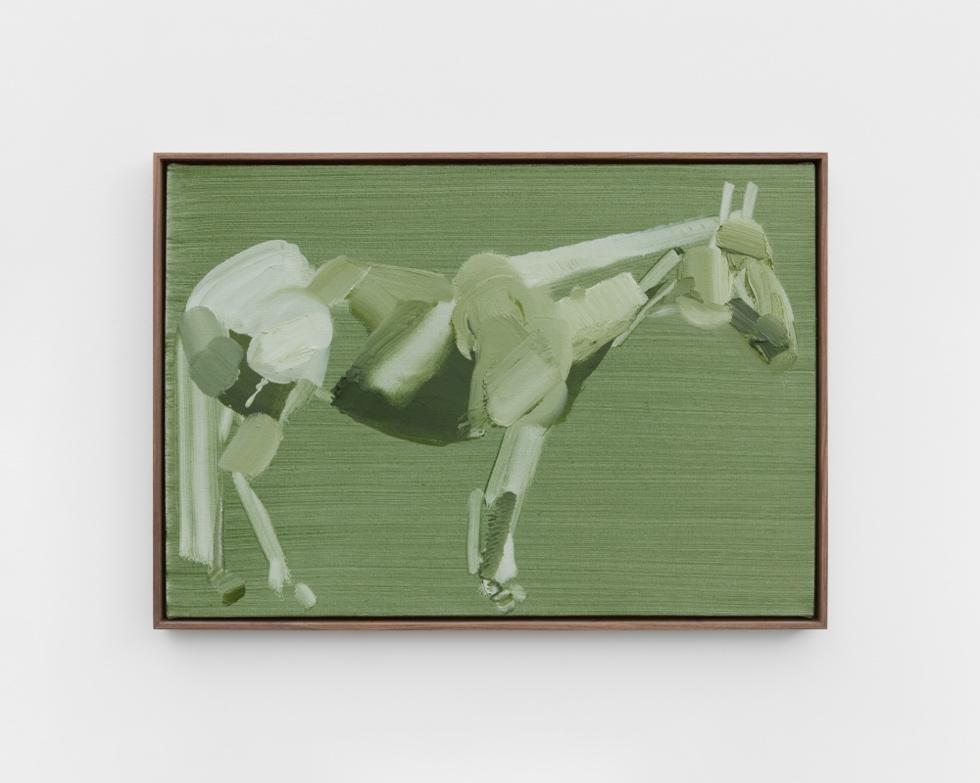
Coolmore Blues, 2022
oil on linen
72 x 88 in (182.9 x 223.5 cm)
Photo courtesy the artist and Night Gallery, Los Angeles. Photo: Nik Massey
His horses are the closest pieces in the collection to traditional nature paintings and provide the clearest view of the artist’s use of materiality. The horses vary in abstraction but are generally more realistic than his mountains. The backgrounds showcase the “Green Earth” of the title, laying a neat, satisfying foundation for the image. The thin layers of paint allow for a smooth finish, which allows the texture of the canvas to peer through. The horses, then, are painted atop this smooth foundation. For the horses, Woll has painted with a wide brush to lay down thick strokes. The strokes look simple, but it is easy to imagine that his style allows for a miniscule margin of error as most of the strokes look to be done in large, singular movements. The technique, which carries through the collection, allows Woll to generate elegant, impressionistic depictions of the animals. Simplicity yields detail as the eye is drawn to the lines of each stroke. The horses are all painted in earth tone colors. One, a collection of darker color and more detail, resembles a more classical, realistic animal painting. A white one appears more ethereal.
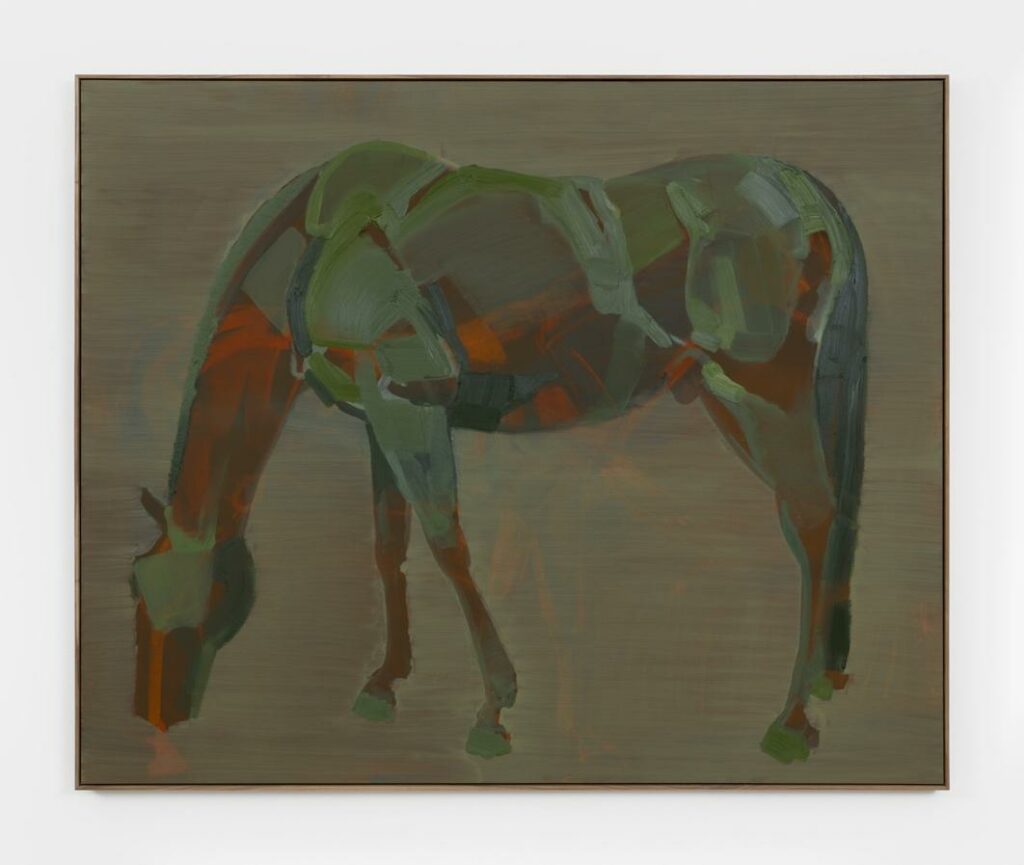
VDL Hamilton, 2022
oil on linen
73 x 89 1/2 x 2 1/4 in (185.4 x 227.3 x 5.7 cm)
Photo courtesy the artist and Night Gallery, Los Angeles. Photo: Nik Massey
His mountains share some of that ethereality. Woll depicts Mt. Wilson across numerous canvases and different color patterns. The simplicity and complexity of strokes remains the same. If one stands closer to a canvas, it becomes harder to extract the shape of a mountain from the images. There might appear to be little design or logic behind the strokes, which seemingly move up and down, side to side, blending and clashing with each other. The strokes, also, however, give the paintings raised, textured quality. The materiality of the paint assists Woll in depicting the rough, bumpy surfaces of rock faces. If we look closely, rock faces evade depiction. Woll recognizes this, contrasting romantic and awe-inspiring images of mountains that are commonly used in nature photography and advertisements.
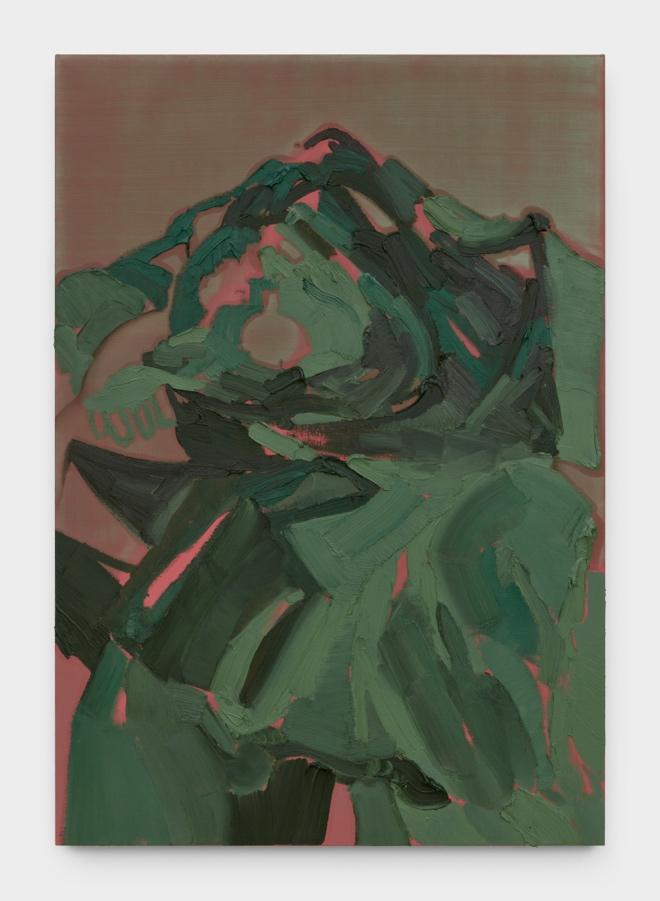
Mt. Wilson (Princess Margaret Theresa IV), 2022
oil on linen
54 x 37 1/2 in (137.2 x 95.3 cm)
Photo courtesy the artist and Night Gallery, Los Angeles. Photo: Nik Massey
Each Mt. Wilson painting contains “(Princess Margaret Theresa)” in the title, and she’s blended into some of the images themselves. Including Margaret Theresa has several functions. The artist, of course, directly nods to Diego Velasquez’s Las Meninas, which places Green Earth into dialogue with Renaissance art history. Theresa’s silhouettes complement his usage of the “Green Earth” pigment with an homage to Las Meninas that reworks it into a different dialogue. He also draws out a reflection on creating along nature-culture distinctions. Along the history of this distinction, theorists have written that “nature” as a concept has been created by the modernization process. Prior to the existence of what we call “culture,” “nature” was not a distinct category, as the contrast was yet to be established. “Nature,” is then a construct that we formulate to Other natural spaces, like mountains, in contrast to culture. One result of this is the projection of human culture onto nature. This projection can function to help us understand, master, celebrate or minimize natural Other spaces. Margaret Theresa peering through mountain paintings is Woll’s reflection on acts of aesthetic anthropomorphizing of nature
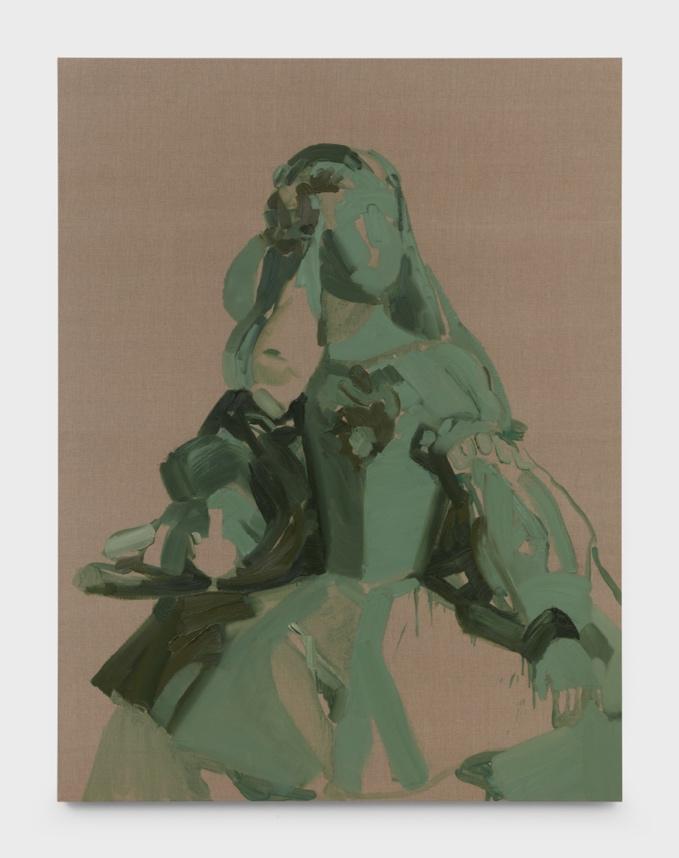
Mt. Wilson (Princess Margaret Theresa XII), 2022
oil on linen
84 x 64 in (213.4 x 162.6 cm)
Photo courtesy the artist and Night Gallery, Los Angeles. Photo: Nik Massey
Woll’s series of silhouette mountains, perhaps best represented in XII, reflects on this aesthetic tendency. Here the artist places human culture inside of the natural fold, recalling both histories of romanticism and destruction of nature. Along with the silhouettes, Woll also puts his name within the strokes of the paintings, inserting his own selfhood into the natural and painted spaces. Here he acknowledges the self-consciousness of artistic depictions of natural spaces. By wallowing in the materiality of the paint, the artist responds to the complicated dynamics of technological and postmodern mediations of nature. The paintings themselves ask us to slow down, to resist the immediacy of techno-culture and to observe the carefully brushed strokes of paint, which bring disparate movements together into purposeful constructed wholes.
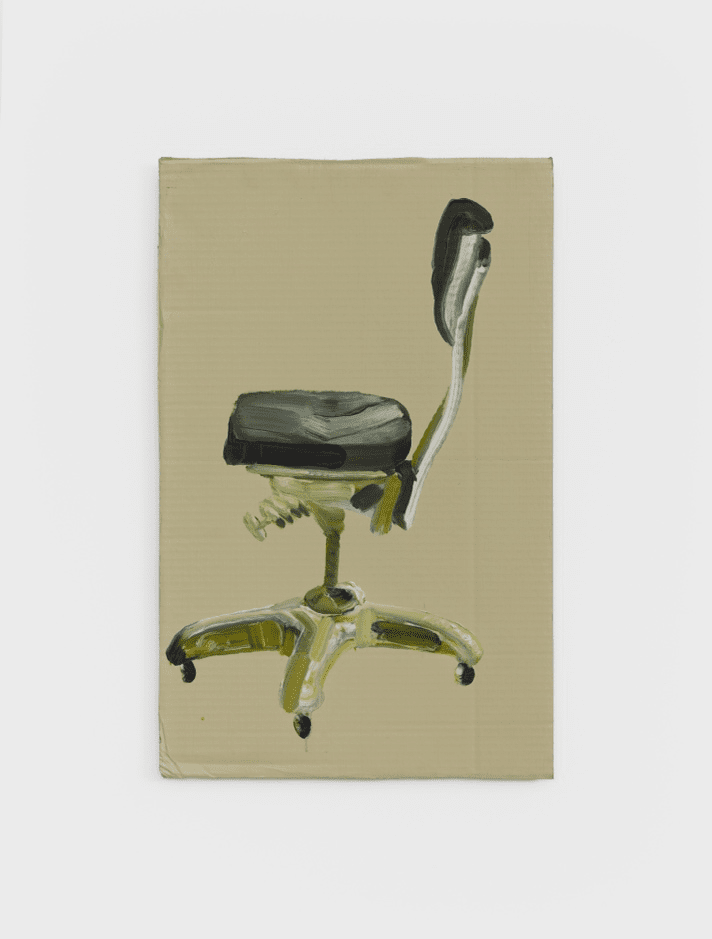
City of Commerce (Didi), 2022
oil on cardboard
24 x 15 1/2 in (61 x 39.4 cm)
Photo courtesy the artist and Night Gallery, Los Angeles. Photo: Nik Massey
The odd ones out of the series of paintings, then, are Woll’s swivel chairs. They neither fit with the mountains or horses, nor is there any reason to consider them “nature paintings.” Rather, they serve to reinforce the artists self-conscious acknowledgement of artifice. The human artifice of the chairs complements the human artifice of the mountains and horses. They suggest an elevation of the ordinary, everyday objects that surround us. Gathering them in the series suggests an ordinariness of nature and nonhuman life, resisting romanticism. The materiality of the paint and precision of strokes suggests an ethic of care and slowing down. The care attributed to the chairs suggests that we should apply that same care to nonhuman life in the self-conscious Anthropocene.
-Josh Beckelhimer